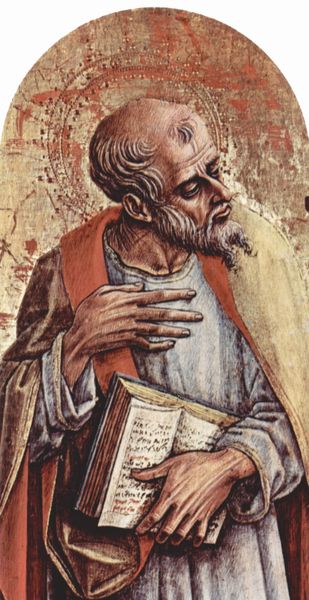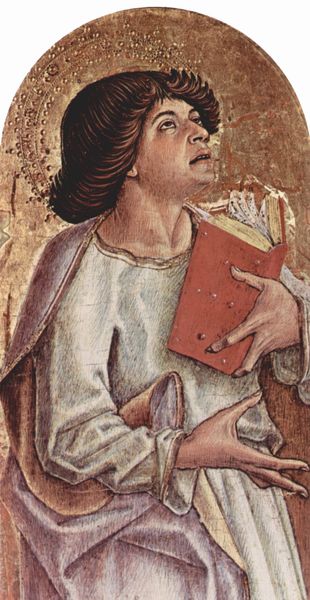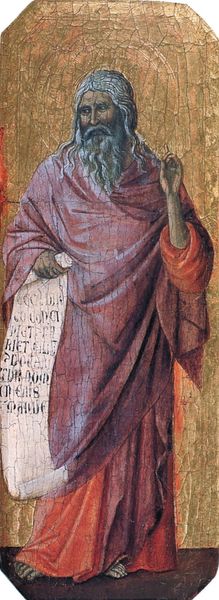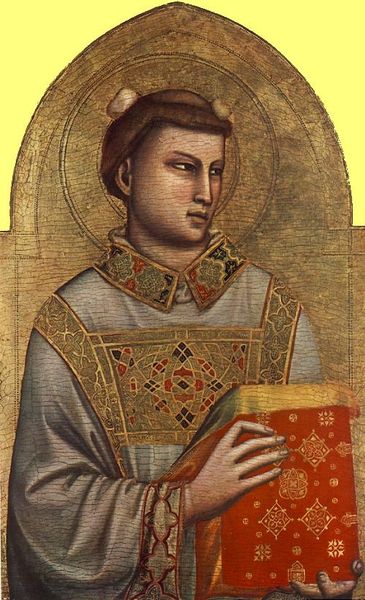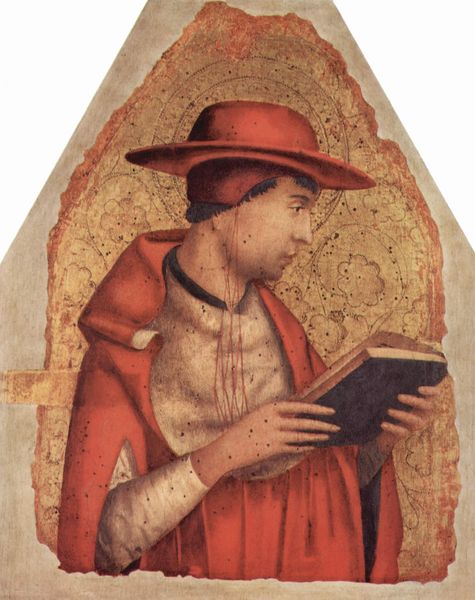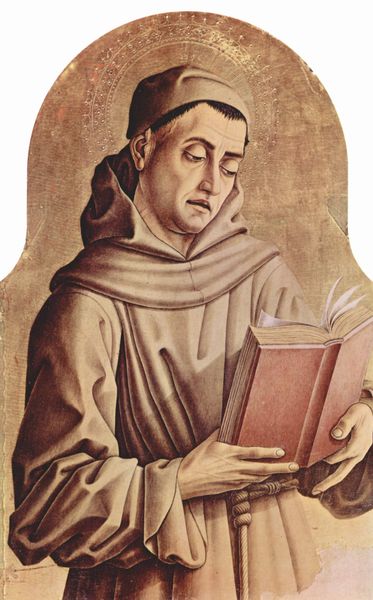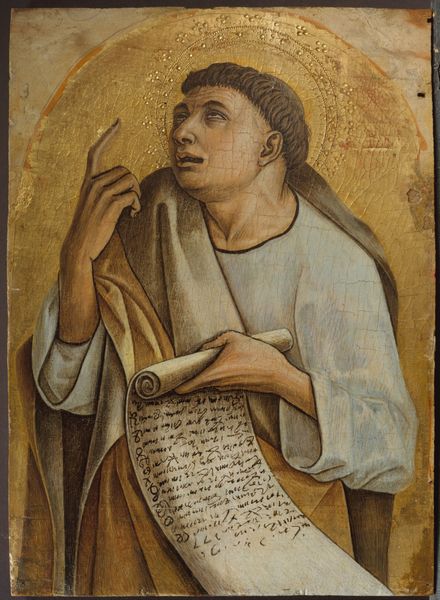
painting, oil-paint
#
portrait
#
medieval
#
painting
#
oil-paint
#
oil painting
#
christianity
#
history-painting
#
italian-renaissance
#
early-renaissance
#
portrait art
Dimensions: 29 x 17 cm
Copyright: Public domain
Curator: What a striking figure! The somber, muted colors give it such a sense of seriousness. Editor: Indeed. Let's delve into this Early Renaissance artwork. This oil painting is Carlo Crivelli's "Saint Bartholomew," dating back to 1473. Curator: "Saint Bartholomew," you say? That explains the introspective mood. Note the focused expression, and the detailed illumination, centered as it is on the opened codex. Clearly, we're presented with a scholar. Editor: Note also how Crivelli constructed the book itself: the textures of the page, and the slight distress to the leather speak to its use in its particular time, within a social infrastructure centered in books. How was this knowledge crafted and transmitted? Curator: But it's more than just a book. This image, for a contemporary audience, carries potent symbolism. Saint Bartholomew, associated with knowledge and the written word… Think of the role books held as not just conveyors of text, but objects of great status within monastic orders. The act of reading in and of itself would have symbolized devotion. Editor: Interesting. To your point: think, too, of the manual labor required to produce such books. From the preparation of the vellum to the precise application of ink, everything points back to production processes deeply entwined with the spiritual life. I'm interested in how the economics affected their craft, and in turn how the value system that places such importance of craft influences modern appreciation of their value. Curator: It does present something of a contrast, doesn’t it? We’re gazing upon a serene, thoughtful portrait, but its existence hints at this intense network of social relations—between production, class, and faith. It adds an extra layer of complexity to our viewing experience, realizing what the social experience surrounding these objects was. Editor: The symbolic value and the material production, intricately woven together, indeed make Crivelli’s piece an object to contemplate with that interplay of contexts. I'm also left to think about who the saint, whose intellectual production resulted in this manuscript being presented, truly was. Curator: Yes, a reminder that beauty and devotion are often underpinned by very real, tangible means. Editor: And for my part, I’ll reflect on the way physical artistry could become its own sort of spiritual experience.
Comments
No comments
Be the first to comment and join the conversation on the ultimate creative platform.
